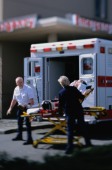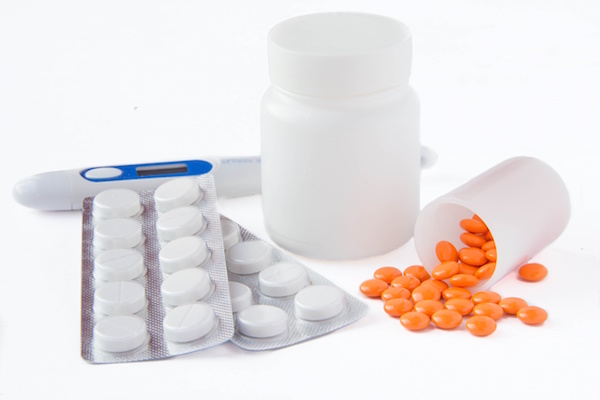
TUESDAY, April 30 (HealthDay News) — More than one-third of people having a stroke don’t call 911, even though that’s the fastest route to potentially lifesaving treatment, a new study reports.
“Prompt diagnosis and early management is essential to decrease morbidity and mortality after stroke,” said lead researcher Dr. James Ekundayo, an assistant professor of family and community medicine at Meharry Medical College in Nashville, Tenn.
“If about one-third does not arrive by ambulance, the implication is that they will have delayed evaluation and treatment with lifesaving drugs,” Ekundayo said.
For patients with ischemic stroke — a blood clot blocking a blood vessel in the brain — prior research has shown that administration of clot-busting drugs within two hours of symptom onset greatly reduces the odds of disability three months later. Ischemic stroke is more common than hemorrhagic stroke, which occurs when a blood vessel bleeds into the brain.
The study — published April 29 in the journal Circulation: Cardiovascular Quality and Outcomes — looked at how more than 200,000 stroke patients arrived at hospital emergency rooms from 2003 to 2010. About 64 percent arrived by ambulance and the rest used other forms of transportation, the researchers found.
Patients who used emergency medical services (EMS) had shorter pre-hospital and in-hospital delays, the study found. “They arrived early, had prompter evaluation and received more rapid treatment,” Ekundayo said.
Time to treatment is faster partly because EMS notifies the receiving hospital about the patient, “and the emergency room staff is ready to act as soon as the patient arrives,” Ekundayo added. EMS teams also know which hospitals have advanced stroke care and can take patients directly there.
Calls to EMS were less frequent among minority groups and in rural areas, the researchers found.
Dr. Ralph Sacco, past president of the American Heart Association, said this finding shows a need for “more focused education campaigns on the importance of calling 911 among these groups.”
Sacco, chairman of neurology at the University of Miami Miller School of Medicine, said this study “amplifies the need to call 911 if you think you are having a stroke.”
Experts say “time is brain,” meaning the faster a stroke patient gets to the hospital, the better the outcome. Among patients who arrived within two hours of symptoms starting, 79 percent had come by ambulance.
About 61 percent who called 911 got to the hospital within three hours, as opposed to 40 percent who didn’t call EMS, the study found.
About 55 percent of the ambulance callers had a brain scan within 25 minutes of arrival at the emergency room, compared with 36 percent who didn’t use EMS. Those eligible for a clot-busting drug received it sooner if they used an ambulance: 67 percent using EMS got the drug within three hours of symptoms starting compared to 44 percent who didn’t call EMS.
Those who didn’t call 911 were likely to say they didn’t want to be a bother, or they didn’t recognize the severity of the symptoms, the study authors said.
Each year in the United States nearly 800,000 people have a new or recurrent stroke. Recognizing stroke symptoms and calling EMS are the best way to improve the outcome, the experts said.
Experts recommend using the acronym F.A.S.T. as a simple way to remember the symptoms of a stroke. Here are the signs:
- Face drooping: Is one side of the face drooping, or is it numb? Ask the person to smile.
- Arm weakness: Is one arm weak or numb? Ask the person to raise both arms. Does one arm drift down?
- Speech difficulty: Is speech slurred, or is the person unable to speak or hard to understand? Can the person repeat a simple sentence, such as “The sky is blue”?
- Time to call 911: If any of these symptoms exist — even if they go away — call 911 and get the person to a hospital immediately.
More information
For more information on stroke, visit the National Stroke Association.

